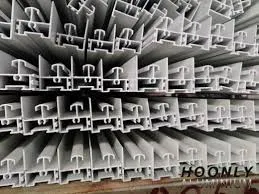cast iron finial
The Charm and Versatility of Cast Iron Finials
Cast iron finials are decorative yet functional architectural elements that have captivated designers and homeowners alike for centuries. Crafted from a sturdy and malleable material, these finials not only enhance the aesthetics of a building but also serve a variety of practical purposes. This article will explore the significance, history, and myriad applications of cast iron finials in modern architecture and design.
Historical Context
The use of cast iron in architectural details traces its roots back to the Industrial Revolution in the 18th century. As manufacturing processes advanced, cast iron emerged as a favored material for many decorative applications. Finials, which are ornamental features that crown a structure or object, became prevalent in the design of buildings, fences, and gates. The intricate patterns and designs achievable with cast iron allowed for a level of craftsmanship that was both robust and exquisite.
Notably, finials come in various shapes and motifs, including fleur-de-lis, urns, animals, and abstract forms, symbolizing everything from spirituality to authority. The distinctive patina that develops on cast iron over time adds to its charm, giving every piece a unique character.
Aesthetic Appeal
One of the most appealing aspects of cast iron finials is their aesthetic versatility. They can be seamlessly integrated into a variety of architectural styles, from Victorian to Gothic Revival, or even contemporary minimalism. When installed atop a fence post, gate, or rooftop, they serve as eye-catching focal points that draw the viewer's attention.
In residential settings, cast iron finials can elevate the appeal of garden fences, porches, and balustrades, adding a touch of elegance and sophistication. For commercial properties, they can enhance storefronts and create a memorable architectural identity. Their decorative qualities make them a favored choice in landscape architecture, where they bring character to public parks, plazas, and botanical gardens.
cast iron finial

Functional Benefits
Beyond their beauty, cast iron finials also deliver practical benefits. Their solid construction provides structural stability for various applications, including marquee signs, lamp posts, and even furniture. In roofing, finials can aid in directing rainwater away from critical junctions, thereby prolonging the lifespan of the structure. In this sense, they act as both guardians of a building’s integrity and enhancements to its visual statement.
Moreover, cast iron finials have a notable durability that allows them to withstand harsh weather conditions without losing their charming appearance. Unlike materials that may fade, corrode, or deteriorate over time, properly maintained cast iron retains its structural integrity and visual impact for decades, making it a wise investment for long-term aesthetic appeal.
Artistry and Craftsmanship
The artistry that goes into the creation of cast iron finials cannot be understated. Skilled artisans often design these pieces, ensuring that each finial reflects both functionality and beauty. Traditional methods of sand casting remain popular, allowing intricate designs to be replicated accurately. With the rise in modern techniques such as CNC machining and 3D printing, the possibilities for innovation in design and customization are vast.
Local artisans and manufacturers often produce custom finials, enabling homeowners and designers to create unique elements tailored specifically to their projects. This emphasis on craftsmanship not only honors the historical significance of cast iron but also fosters a deeper appreciation for artistic integrity in contemporary design.
Conclusion
Cast iron finials embody a harmonious blend of beauty, functionality, and historical significance. From decorating rooftops to crowning gates and enhancing fences, they serve as timeless symbols of artistry in architecture. Their durability and versatility ensure that they remain an excellent choice for modern design applications. As we continue to appreciate the charm of cast iron finials, we also recognize their role in connecting us to the past while enhancing our built environment for the future. Whether you're a homeowner, designer, or architect, consider the impact of cast iron finials as both decorative statements and functional components that enrich our architectural landscape.
-
Wrought Iron Components: Timeless Elegance and Structural StrengthNewsJul.28,2025
-
Window Hardware Essentials: Rollers, Handles, and Locking SolutionsNewsJul.28,2025
-
Small Agricultural Processing Machines: Corn Threshers, Cassava Chippers, Grain Peelers & Chaff CuttersNewsJul.28,2025
-
Sliding Rollers: Smooth, Silent, and Built to LastNewsJul.28,2025
-
Cast Iron Stoves: Timeless Heating with Modern EfficiencyNewsJul.28,2025
-
Cast Iron Pipe and Fitting: Durable, Fire-Resistant Solutions for Plumbing and DrainageNewsJul.28,2025
-
 Wrought Iron Components: Timeless Elegance and Structural StrengthJul-28-2025Wrought Iron Components: Timeless Elegance and Structural Strength
Wrought Iron Components: Timeless Elegance and Structural StrengthJul-28-2025Wrought Iron Components: Timeless Elegance and Structural Strength -
 Window Hardware Essentials: Rollers, Handles, and Locking SolutionsJul-28-2025Window Hardware Essentials: Rollers, Handles, and Locking Solutions
Window Hardware Essentials: Rollers, Handles, and Locking SolutionsJul-28-2025Window Hardware Essentials: Rollers, Handles, and Locking Solutions -
 Small Agricultural Processing Machines: Corn Threshers, Cassava Chippers, Grain Peelers & Chaff CuttersJul-28-2025Small Agricultural Processing Machines: Corn Threshers, Cassava Chippers, Grain Peelers & Chaff Cutters
Small Agricultural Processing Machines: Corn Threshers, Cassava Chippers, Grain Peelers & Chaff CuttersJul-28-2025Small Agricultural Processing Machines: Corn Threshers, Cassava Chippers, Grain Peelers & Chaff Cutters












